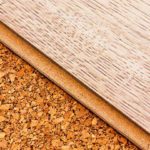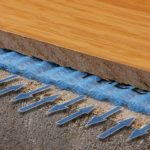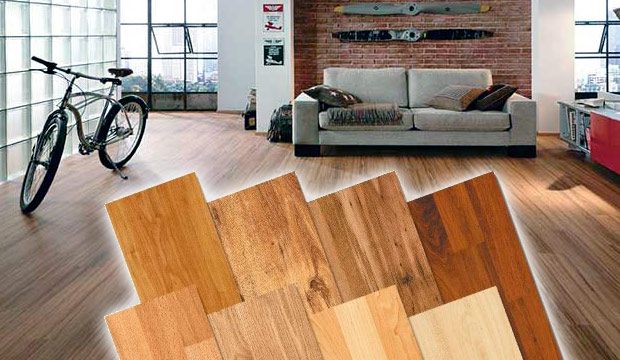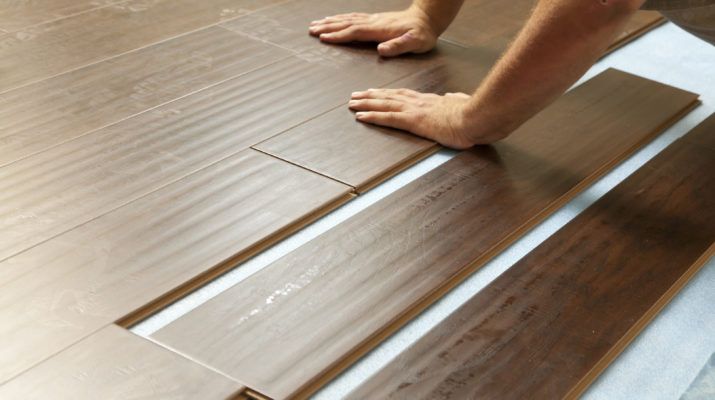Coniferous underlay for laminate: pros and cons
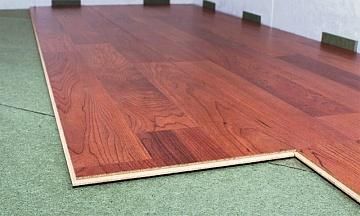 When installing a floor covering, in addition to preparing the floor and the covering itself, the softening and shock-absorbing layer between them is also important. As such a layer when laying laminate, a coniferous substrate is used, which also has its pros and cons. Let's look at it in more detail.
When installing a floor covering, in addition to preparing the floor and the covering itself, the softening and shock-absorbing layer between them is also important. As such a layer when laying laminate, a coniferous substrate is used, which also has its pros and cons. Let's look at it in more detail.
The content of the article
Coniferous substrate
The backing consists of crushed wood fiber from coniferous trees bonded with resin. This is an environmentally friendly material with good soundproofing properties. It is porous, allowing air to pass through.
REFERENCE. This underlay is used when laying laminate, carpet, parquet and linoleum in residential premises, with the exception of rooms with high humidity (bathroom, toilet, kitchen).
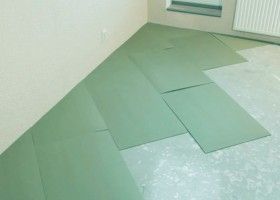 It is advisable to lay it on a plank floor. In case of installation on a concrete base, it is necessary to first lay a polyethylene film for waterproofing. However, this is not recommended by the manufacturers of this substrate due to the possible formation of condensation. And laminate manufacturers remove the warranty on their products if there is no waterproofing.
It is advisable to lay it on a plank floor. In case of installation on a concrete base, it is necessary to first lay a polyethylene film for waterproofing. However, this is not recommended by the manufacturers of this substrate due to the possible formation of condensation. And laminate manufacturers remove the warranty on their products if there is no waterproofing.
There are 2 types:
- in rolls - the material is laid starting from the wall to the center;
- sheets - the material is laid in strips, gluing them together with glue or adhesive tape.
The cost of the gasket is affected by its size and thickness. The thickness shows what unevenness of the floor surface the underlay can cope with:
- 3.6 mm – with small irregularities;
- 4 mm – with irregularities of 1 mm;
- 5 mm – with 1-2 mm irregularities;
- 7 mm – with 3 mm unevenness.
IMPORTANT. When carrying out work, it is necessary to use personal protective equipment to prevent dust and needles from entering the skin and lungs.
Advantages
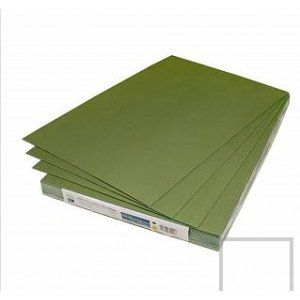 The use of coniferous underlay when laying laminate flooring has the following advantages:
The use of coniferous underlay when laying laminate flooring has the following advantages:
- good sound insulation of the room is ensured (thanks to the use of this gasket, the sound possible when walking on the floor is absorbed);
- leveling the floor surface due to high density (small roughness and unevenness are leveled);
- the gasket is capable of absorbing water (this eliminates the risk of deformation of the laminate coating);
- thermal insulation of the room due to the porous structure of the material;
- environmental friendliness of materials used in production;
- ease of installation (no special tools or skills required for installation);
- resistance to deformation;
- long service life (minimum 7 years);
- It doesn't burn, it just chars.
Flaws
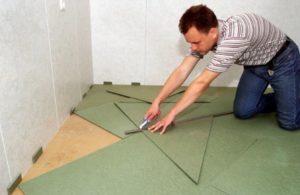 Coniferous substrate has the following disadvantages that must be taken into account when choosing a material and during the installation process:
Coniferous substrate has the following disadvantages that must be taken into account when choosing a material and during the installation process:
- high cost of material;
- cannot be used in rooms with high humidity (it absorbs moisture well and dries poorly, and is destroyed when there is a large amount of water);
- the material has an unpleasant odor that will disappear only after a few weeks;
- the gasket can absorb odor;
- natural pine needles used in the production of gaskets can become a place for the development of dangerous fungi and mold if the base underneath is wet;
- if laid on an uneven base with differences of more than 4 mm, the dense texture causes the substrate to bend;
- breaks and crumbles easily;
- not suitable if residents have allergies.
How to lay it correctly
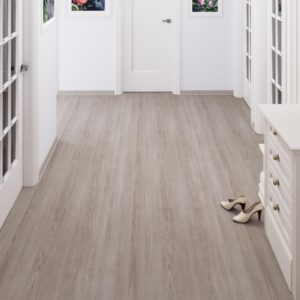
For proper installation, you must follow the installation instructions:
- After unpacking, you should leave it indoors for up to 3 days.
- Waterproof with polyethylene film to prevent moisture or condensation from entering from the concrete base.
- It is better to lay the gasket diagonally to prevent possible overlap of the joints of the substrate and the laminate. To do this, you need to cut a piece at an angle of 45 degrees with a knife or scissors.
- It is necessary to leave a gap between the sheets of material due to the possibility of its expansion depending on the temperature and humidity in the room. Stepping back 5 mm from the wall, the sheets are laid at an angle of 45 degrees. A gap of 1-2 mm is left between the sheets.
- To fasten the edges together, heat-resistant metallized adhesive tape is used, since the tape simply does not stick to the surface of the sheet.
ATTENTION. The edges of the material are uneven, so voids may appear under the finishing coating, which can lead to its sagging under the weight of a person. However, this will go away over time as the gasket shrinks.
Coniferous underlay for laminate, being an environmentally friendly, sound-proofing, leveling and heat-insulating material, has a number of advantages and disadvantages. These, as well as the cost of installation and the material itself, the purpose of the room and the presence of surface unevenness must be taken into account when choosing a suitable layer. With proper waterproofing of the room, such a gasket can extend the service life of the laminate.

